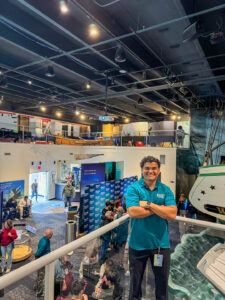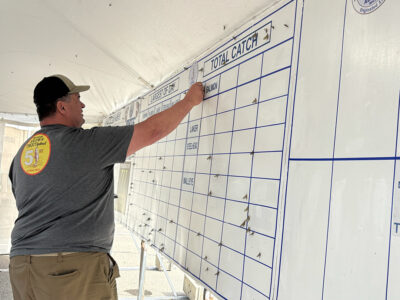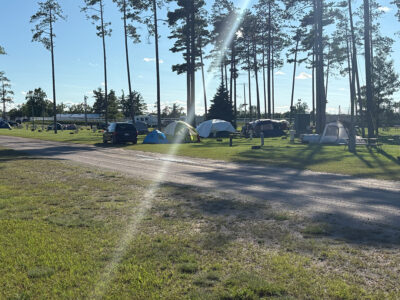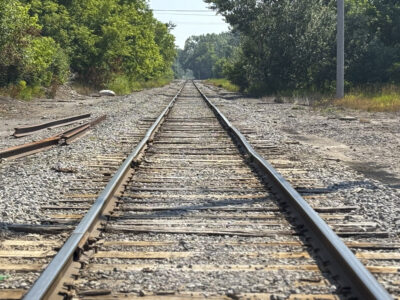PROGRESS 2020: Economic, traffic shifts demark northern sector of state, experts say

News Photo by Steve Schulwitz Truck drivers, like the one seen in this recent photo, drive around the state as much as anyone and differ in opinion on where Up North begins. Some say it is in the West Branch area, while others say it is when you come over the Mackinac Bridge into the Upper Peninsula.
ALPENA — Michiganders have for many years debated where Up North begins, and opinions vary on that question today.
Some say it is when communities become fewer and farther in between, while others say it is when traffic on major expressways and highways begins to thin.
Still others say Up North begins when industry shifts from more manufacturing and commercial operations to agriculture and tourism.
A U.P. Supply Co. study figures that, if the state is measured from its farthest landmasses to the north and south, the center of the state would run along a line between Alcona and Iosco counties and the southern border of Grand Traverse County.
That study also concluded that, if you measure the most-northern and most-southern part of the state border, from Indiana and Ohio all the way to Lake Superior, Up North would begin close to the 45th Parallel, which crosses through the Alpena area.
David Lorenz, vice president for Travel Michigan at Michigan Economic Development Corp., said Up North differs in the eye of the beholder. He said he figures the north begins where I-75 and M-55 intersect in the West Branch area because there you begin to see a transition in economies from heavy manufacturing to seasonal tourism.
“Places north of Cadillac or West Branch are where people go to often go for long weekends and to enjoy the outdoors,” he said.
He said communities in the north depend on those visitors year-round, much more than downstate cities that have more diverse business climates.
“These are places where people go to enjoy traditional activities, whether that is in the summer or to ski or snowmobile,” Lorenz said. “The Up North feeling isn’t really measured in where it is geologically, but rather it is a feeling or a state of mind that communities in the north provide.”
Mike Mahler, Alpena Area Chamber of Commerce economic development director, agreed with Lorenz that M-55 is where the center of the state ends and the north begins. Not only do roads shift from three lanes to two on the expressway, but that is where people from the more populated areas in southern Michigan choose to spend much of their time during the year.
“That is where it seems tourism begins to be an important factor to communities and where people buy second homes, cottages, or hunting camps,” Mahler said. “South of that, you get large corporations like Dow Chemical and smaller businesses that support them that provide many jobs. When you get farther north, you get more tourism and retail-based economies, with some industrial and manufacturing sprinkled in.”
Truck drivers from northern Michigan drive thousands of miles each year around the state, and they also have opposing views of where they think Up North begins.
Bob Tulgestka, of Tulgestka Transport, delivered cargo with a truck for 34 years and his opinion mirrors that of Mahler and Lorenz. He said that, when traveling, you can tell clearly when you are entering the northern part of Michigan, which is less populated than the central and southern parts.
“I have always considered it West Brach,” he said. “There is a significant drop in traffic and you can tell things are more rural. It sure is a lot more relaxed driving for us.”
Shawn Mitchell has driven trucks for 17 years. He considers himself Up North when he exits I-75 and merges onto U.S.-23 North.
“For me it is Standish,” he said. “That exit near Standish is the northern Michigan line, in my opinion.”
Lorenz said some people think the answer is simple. He says some people point to the fact that the state is divided into two separate land masses, one of which is north of the Mackinac Bridge and the other south of it. That means Up North would be entered after leaving the Lower Peninsula and crossing the bridge.
“You could make a case that it is the entire Upper Peninsula, because it is the north of the bridge and north of lower Michigan as a whole,” he said. “I don’t think there is any right or wrong answer.”
Steve Schulwitz can be reached at 989-358-5689 at sschulwitz@thealpenanews.com. Follow him on Twitter @ss_alpenanews.com.





